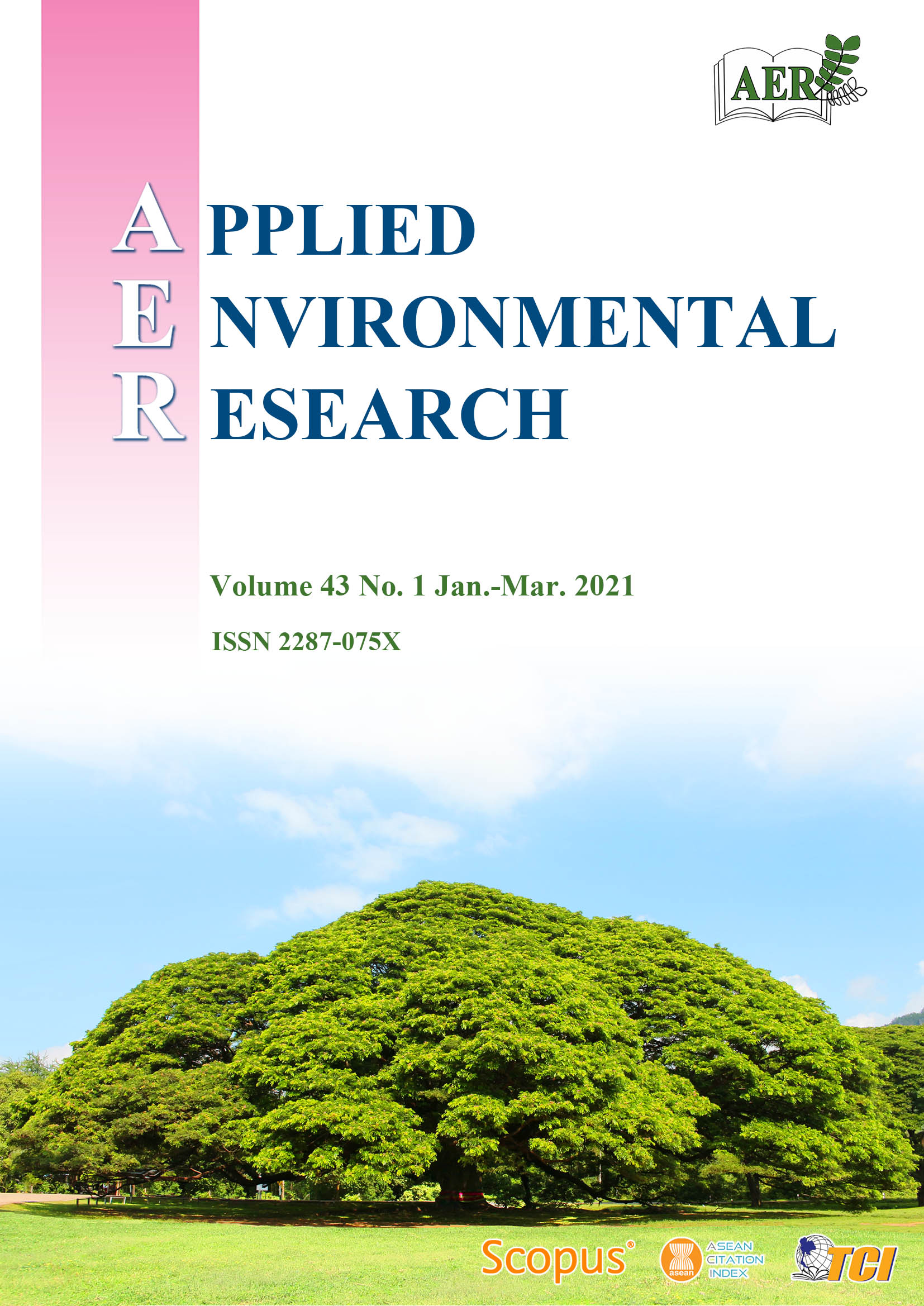Evaluating Water Quality Variation in the Vietnamese Mekong Delta Area Using Cluster and Discriminant Analysis
Main Article Content
Abstract
The study aims to assess spatial and temporal water quality variations in the upper reaches of the Vietnamese Mekong Delta. Thirty-one water monitoring samples of the two main rivers (Tien and Hau Rivers) and six canals flowing through An Giang Province were collected in the dry season (March) and the rainy season (September) from 2009 to 2019. Seven physicochemical parameters were analyzed including temperature, pH, dissolved oxygen (DO), biochemical oxygen demand (BOD), total suspended solids (TSS), orthophosphate (P-PO43-), and coliforms. Water quality index (WQI), cluster analysis (CA), and discriminant analysis (DA) were applied to evaluate water quality, spatial and temporal variations, and seasonal discriminant water variables. WQI values (15–71) indicated surface water quality was very bad to medium in which the water quality in larger and in smaller rivers in the dry season was less polluted than that in the rainy season due to erosion and runoff water containing waste materials in the wet season. CA grouped the water quality in the dry and rainy seasons into four clusters mainly due to BOD and coliforms in the dry season; TSS and coliforms in the rainy season. Discriminant analysis revealed that DO, TSS, coliforms, temperature and BOD significantly contributed to seasonal variations in water quality. Therefore, water quality monitoring in the surveyed area could only focus on DO, TSS, coliforms, temperature and BOD to reduce monitoring cost.
Article Details

This work is licensed under a Creative Commons Attribution-NonCommercial 4.0 International License.
Published articles are under the copyright of the Applied Environmental Research effective when the article is accepted for publication thus granting Applied Environmental Research all rights for the work so that both parties may be protected from the consequences of unauthorized use. Partially or totally publication of an article elsewhere is possible only after the consent from the editors.

